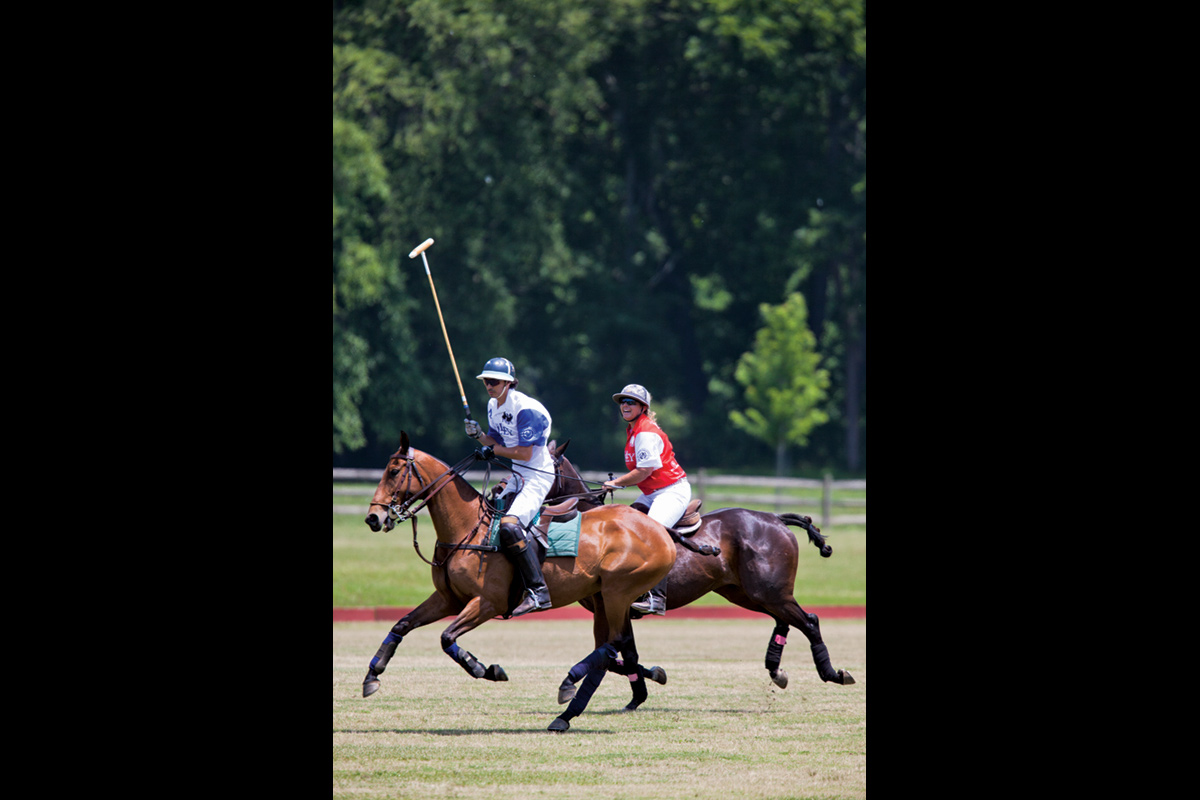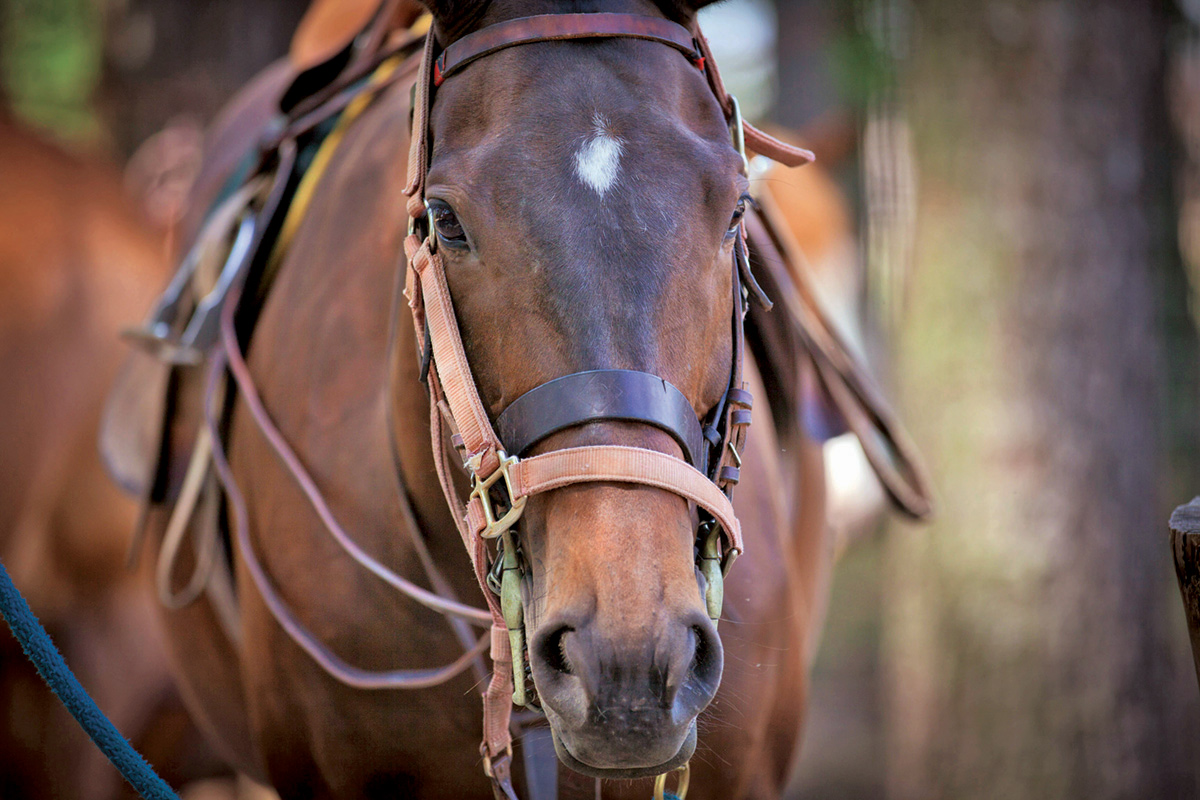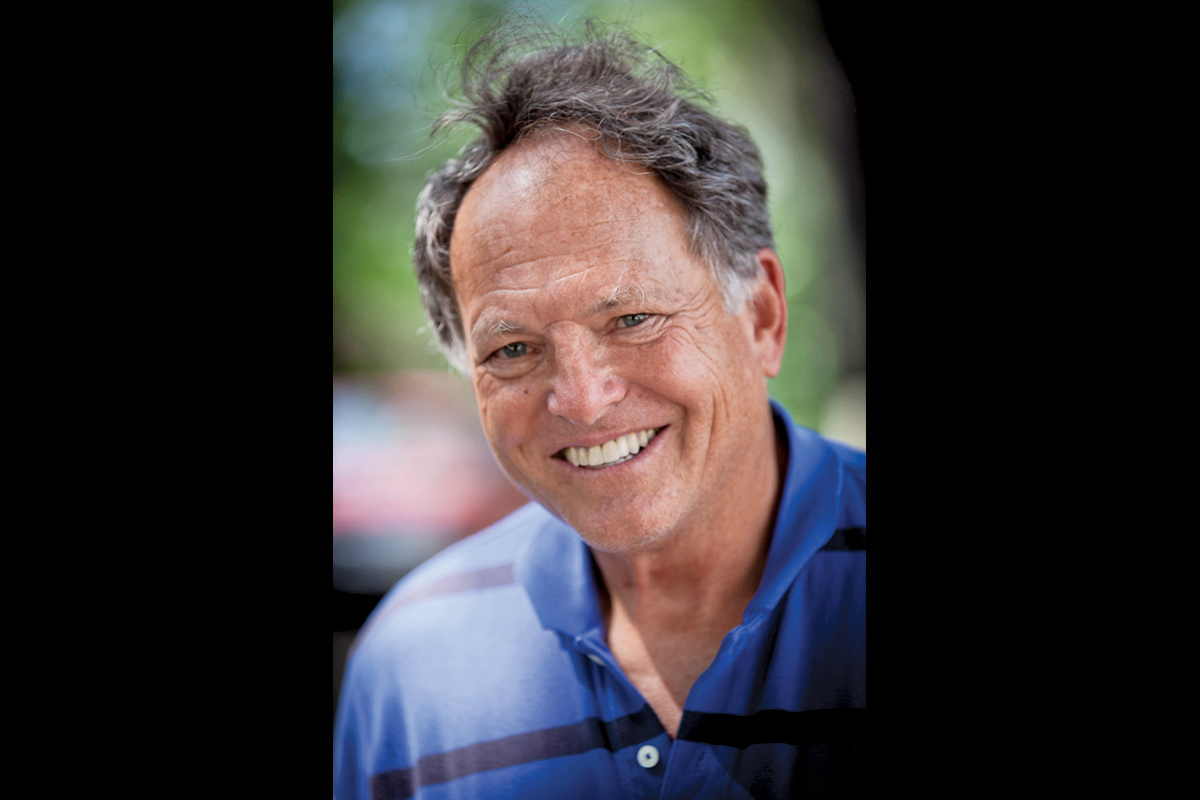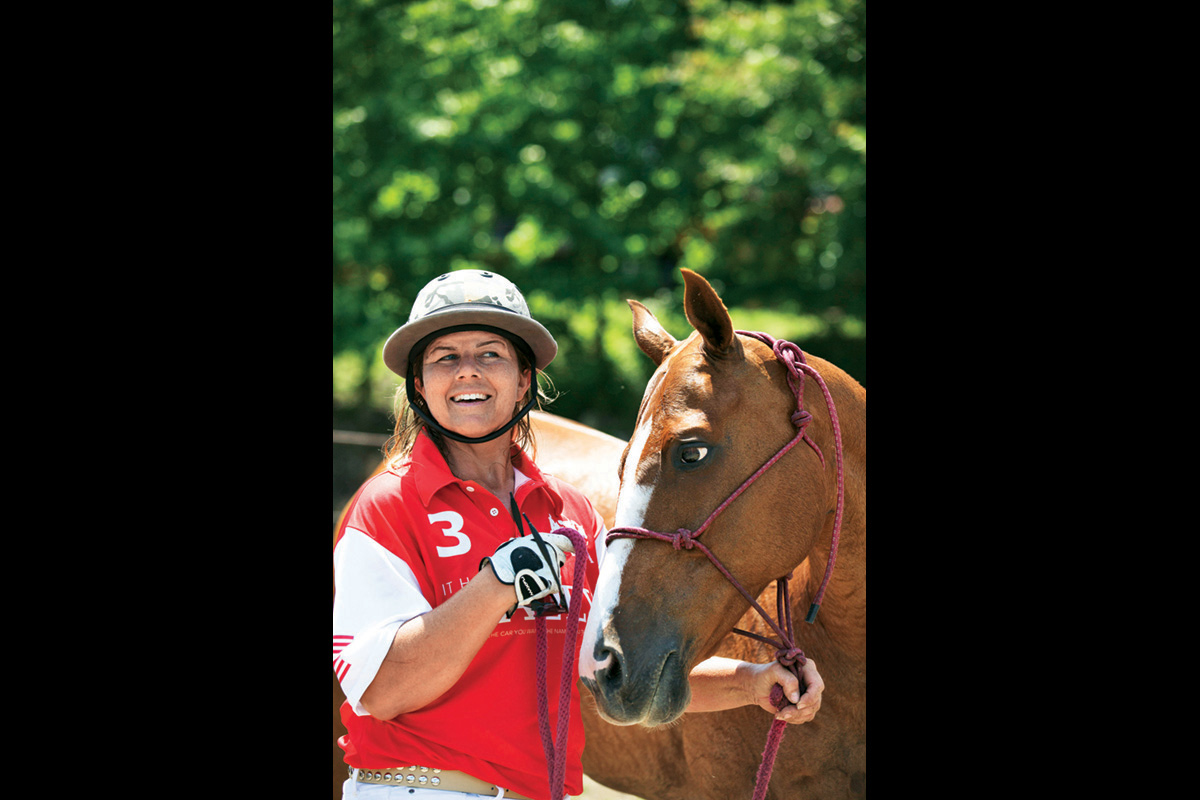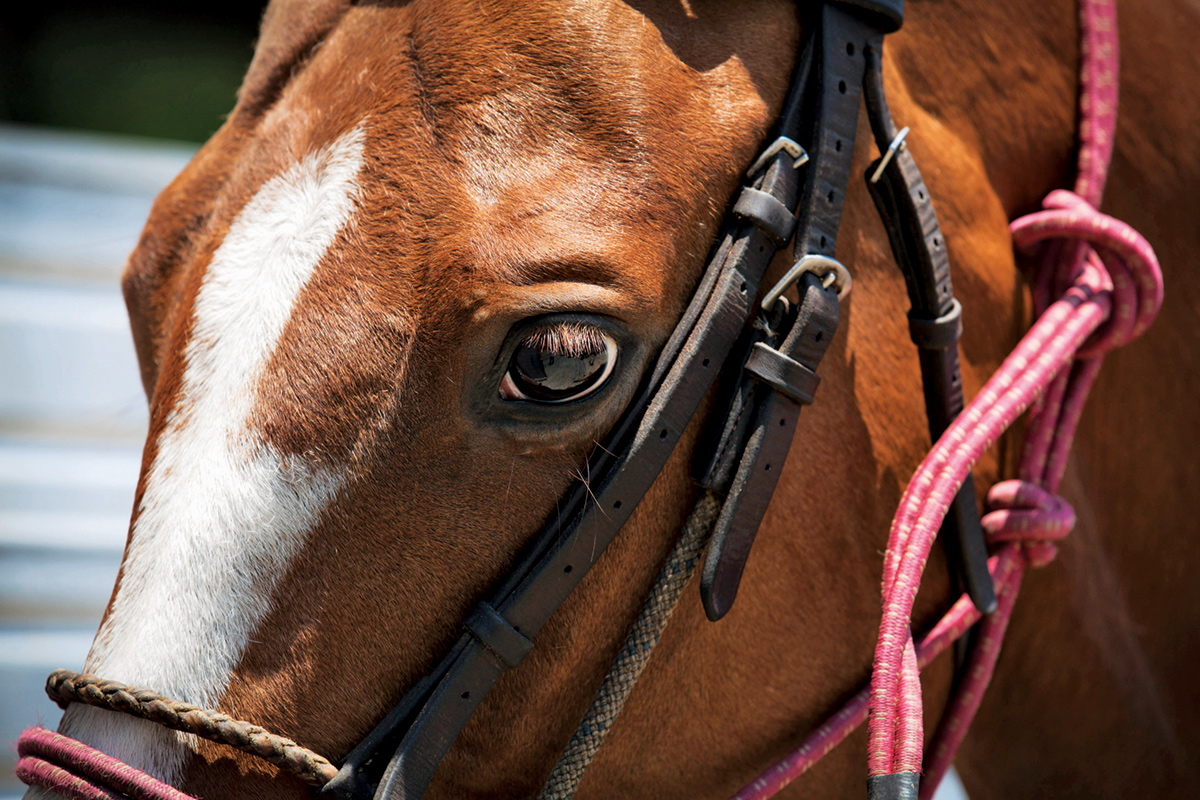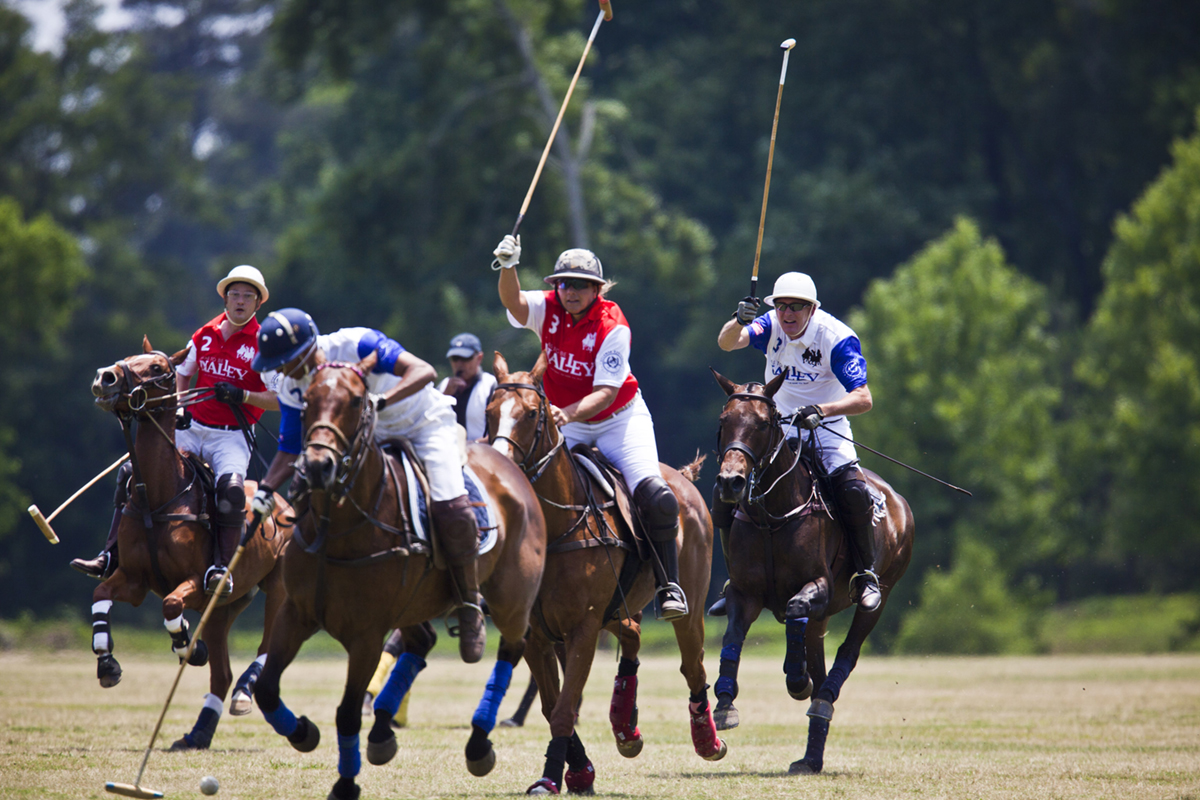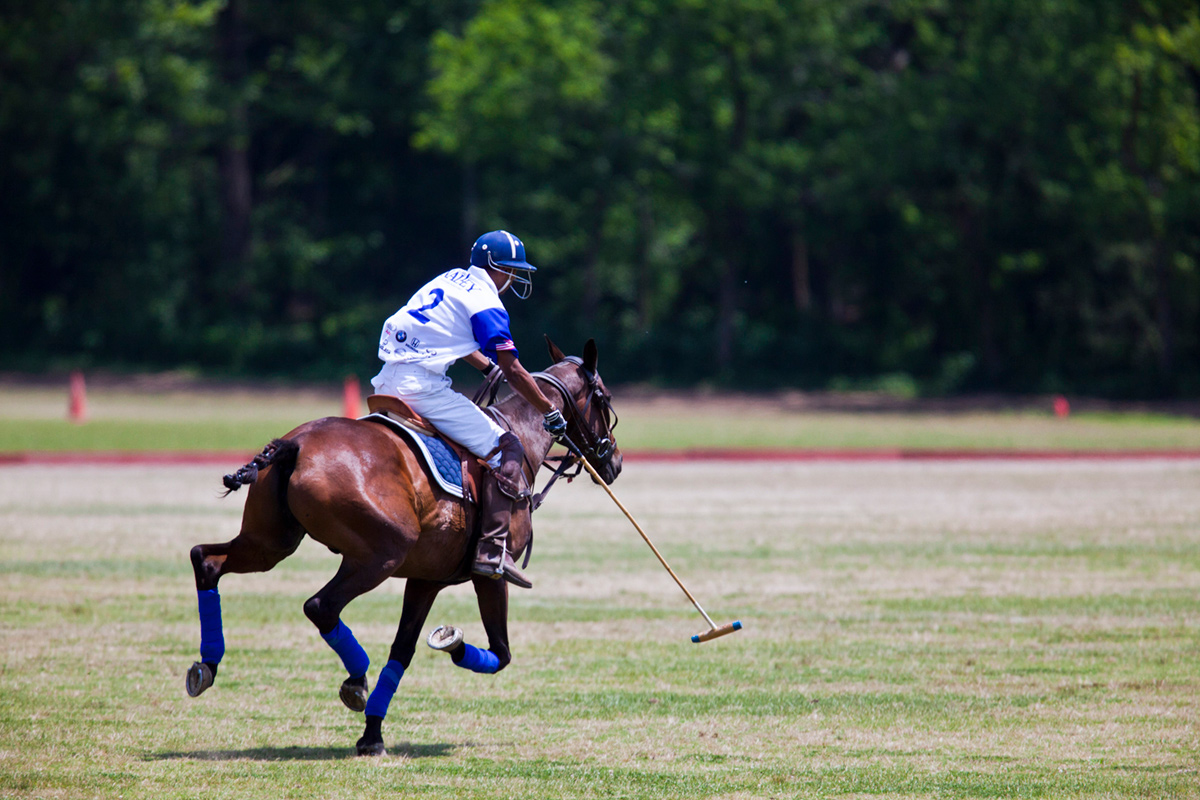Pony Up
Who knew? A handful of alumni are helping polo's growing popularity in Georgia
As a boy growing up in England, Pablo Henderson 97C didn’t want to play soccer or cricket. He enjoyed riding horses, but he didn’t want to race them or teach them to jump. He loved polo.
Winston Churchill, never at a loss for words, had something to say about polo, too. A championship-caliber player as a young man, he spoke from experience, and his words made an impression on young Pablo. “A polo handicap,” he said, “is a passport to the world.”
Henderson took that quote to heart and vowed that he would one day play the game that fascinated him; it only took twenty-odd years and a move to the United States to make it happen. As he grew up, came to Emory, graduated and started his business career, Henderson’s polo dream lay dormant. Then in 2004, at age thirty, Henderson stumbled upon a feature about polo on television and the embers of those youthful dreams caught fire.
“The next morning, I got on the computer and did a search for polo in Atlanta,” says Henderson, who is marketing manager for the W Hotel in downtown Atlanta.
In Europe, polo has a well-earned reputation as a sport of kings and princes, and Henderson was neither. On this side of the Atlantic, though, the sport is a bit more accessible.
“I found Jack Cashin’s place in Alpharetta,” Henderson recalls, his British accent still detectable. “He welcomed me with open arms, threw me on a horse, put a mallet in my hand, and said, ‘get going.’ ”
Cashin, who opened his Chukkar Farm Polo Club in 1989, is something of a local legend and, at eighty-six, the oldest registered polo player in the nation. He’s also a thorough teacher; Henderson had six months of training before he ever played in a formal match. The coordination, skill, and strength necessary to play polo can’t be picked up in a weekend.
No matter. Once Henderson strapped on his boots, “I was hooked,” he says.
The history of polo dates back more than two thousand years, making it one of the oldest team sports in the world. Originally confined to Asia and the Middle East, the game was introduced to England in the 1870s and the US about a decade and a half later, and the country has more than 3,500 registered players. Polo in Georgia is a more recent development, but the Southeast has evolved into a polo hotbed—and the sport has several Emory alumni to thank for its burgeoning popularity.
Adolphus “Dolph” Orthwein Jr. 68L took up polo at fifteen. He and his brothers learned from Dolph Sr., who started playing after returning home to St. Louis from World War II. Generations of Orthweins and their cousins, the Busches (of Anheuser-Busch fame), play polo, with passion and dedication.
Dolph Jr. starred on the Yale polo team in his undergraduate days and won an intercollegiate national championship in 1965.
Despite his success and love for polo, when Orthwein came to Emory’s School of Law in 1965 and stayed in Atlanta after graduating, he was ready to give it up. “I thought my polo-playing days were over,” Orthwein says.
Not quite. One day, a fellow law alumnus, Jim Avery 67L, noticed a polo decal on the back of Orthwein’s car. The conversation turned to the sport, and they talked about starting a club in Atlanta. Soon after that 1968 discussion took place, the pair gathered a few fellow enthusiasts, and the Atlanta Polo Club was born—the state’s first.
Founded on a farm between Atlanta and Marietta, the club bounced from site to site before settling in its current location in Vinings in 1985. Visitors to the neighborhood might drive past the club and not even know it’s there—as if it is easy to hide a playing surface the size of seven-and-a-half football fields plus a clubhouse-grandstand and ample room for trailer parking and pony maintenance. All polo horses, many of whom are quite large, are known as “ponies,” regardless of age or size.
Since Atlanta Polo brought the sport to town, more than a half-dozen polo clubs have popped up around north Georgia, from Carrollton to Canton to Cumming, and they serve somewhere between 120 to 150 serious players. About thirty of those are members at Atlanta Polo, but all are welcome to play there during the season, which runs May through October.
Another Emory law grad, Paul Liston 67L, owned a farm in Tyrone, about twenty-seven miles southwest of the city in rural Fayette County. Orthwein and Liston knew each other only casually while in school, but their mutual interest brought them together and Liston joined the club. That’s how Orthwein met Paul’s daughter, Jolie. If Orthwein is rightfully known as the father of polo in Georgia, Jolie Liston 90C is its ambassador.
A rider her entire life, Liston was twelve when she started playing polo, and quickly developed exceptional skills. Emory didn’t have a team in the 1980s and 1990s, but the University of Georgia did, and Liston played there as a graduate student in veterinary science.
She went on to turn professional, spending winters in south Florida, the epicenter of polo in the US. In 2000, the International Women’s Polo Association named her its Player of the Year—the first American so honored. Liston spent several years traveling nationally and internationally to tournaments.
Now she hits the road only about twice a year. Like other area polo enthusiasts, she plays several times a week, but her focus has shifted more toward teaching others.
“The traveling just got exhausting,” says Liston, who has the naturally tanned face of someone who spends a lot of time outdoors. “I wanted to stay home more, and the closest arena was two hours away. So I had this idea to build an arena where I could play polo all the time.”
That backyard arena, built in the mid-2000s and located on the Tyrone farm where Liston grew up, quickly blossomed into a destination where people wanted to take polo lessons, board horses, and play the game. In 2005, the Polobear Polo Club was born.
Liston now has more than fifty club members, boards some sixty ponies, and owns twenty-four of her own—including one, a beautiful, chestnut-colored horse named Dancer, who is the great-granddaughter of the legendary Triple Crown–winning thoroughbred Secretariat. Since launching Polobear, Liston has earned a reputation as a gifted teacher and an energetic promoter of the sport. She works hard to raise interest in polo and bring in new players. One of her most successful efforts involves her alma mater.
In 2009, Liston approached Emory Club Equestrian and asked if its student riders would be interested in trying polo. Many were, and the Emory co-rec polo team was born. Liston, with some assistance from Henderson, put it together and continues to coach the team and provide its facilities. The current squad boasts an impressive twelve players of varying experience, eight of them women.
Also in 2009, Liston hosted representatives from the United States Polo Association. In 2010, her facility was designated as a Regional Training Center, the only in the Southeast and one of just four in the US. The renamed Atlanta Regional Polo Center (ARPC) offers training to players, umpires, and managers, and also helps other clubs promote the sport in the area.
The more you try to compare polo to something else, Henderson warns, the further you stray from its core, but some basic association to more well-known sports is necessary just to get the gist of the game.
Polo most resembles soccer—if the players rode horseback and, instead of kicking an inflated ball, they smacked a hard plastic one with a flexible cane and wooden mallet through a goal without a keeper. When a mallet strikes the ball, the sound is more of a high-pitched “pop” than the “crack” of a baseball off a bat, making it less intimidating. However, the thunderous, ground-shaking galloping of the ponies, who can reach speeds of forty miles an hour, and the skill required to handle them, makes for an unquestionably thrilling spectator sport.
Polo, like other equestrian disciplines such as horse racing and show jumping, is one of the few sports where men and women compete against each other, although men’s and women’s polo exists as separate events, as well. Teams are four a side—three in arena polo of the type played at Liston’s center. Arena polo, which is played on dirt with a larger ball and higher walls on a much smaller field, is comparable to outdoor polo just as indoor soccer is to its full-size cousin. Matches are broken into six, seven-minute periods called chukkers. For their own safety, ponies cannot play in consecutive chukkers, meaning that the minimum number of mounts a player may field is two. Players who don’t own their ponies must lease them. It’s a significant expense, in a sport with several.
Polo balls don’t survive the day. After just a few chukkers, they are as dirty and dented as your grandfather’s pickup truck. And don’t let polo’s patrician personality fool you; it is a violent game. Not deliberate person-on-person or person-on-pony violence, but ponies and players collide. Players wear helmets with masks for a reason, and getting hit with the ball (not to mention an errant mallet swing) hurts. A lot.
Even as Orthwein jokes that the Atlanta Polo Club is “just a group of people who get together to hit a ball around while riding horses,” there is without question a social aspect to polo. Champagne—as opposed to say, Powerade, although there is some of that, too—is a not uncommon post-match beverage. Bubbly aside, polo is a family affair with well-dressed spectators of all ages populating the sidelines. Barbecues, known as “asados” from the Argentine tradition, often wrap up a weekend’s match at Atlanta Polo. There is a lot of collaboration among clubs, too.
“Everyone who plays knows everyone else,” says David Kaplan 83C 83G, who played polo in his twenties, stepped away from it for some years, and then picked it back up again in 2007. A frequent international traveler in his work as an airport developer, Kaplan often takes his polo gear along to play at local clubs. In 2009 and 2010, Kaplan also helped organize the US-Sweden Polo Invitational, a home-and-home series of friendlies that marked the first time a US team had ever played in Sweden. And when Kaplan’s Alpharetta-based club, Scuppernong, hosted the Swedish team in 2010, it marked the first time the Swedes had ever sent a team to the US.
Liston also does her part to expand the game—especially by teaching young players. ARPC’s junior polo program is among the best in the nation.
Stephanie Riemann 97MR followed her high school daughter Jessica onto the field some three years ago. “I play about two or three times a week, and it’s not enough,” she says. Like most polo players, Riemann is hooked.
“It’s a total escape,” Orthwein says. “While you are out there playing, your mind is totally focused on what you’re doing.”
“It’s an out-of-body experience for me,” echoes Henderson. “It’s like a form of hyperconcentration. Then you add the speed and adrenaline, and it becomes a new level of meditation. And it creates a high. When I come off the field, I have that feeling.
And that’s why they call polo an addiction.”
